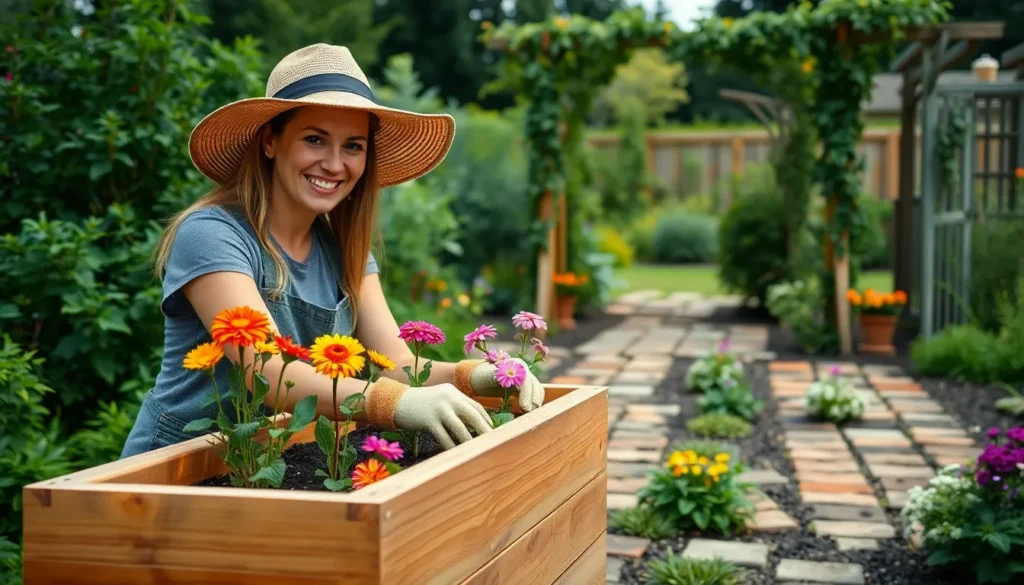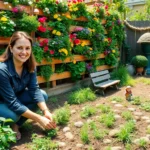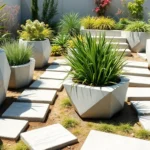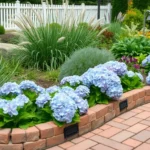We’ve all gazed out at our outdoor spaces and imagined how they could become something truly extraordinary. Garden DIY projects offer the perfect opportunity to transform your yard into a personal paradise without very costly or hiring expensive contractors.
The beauty of DIY gardening lies in its endless possibilities – from creating stunning vertical planters and cozy fire pit areas to building raised beds and charming garden pathways. We’ll explore creative answers that work for every skill level and budget whether you’re a weekend warrior or a seasoned DIY enthusiast.
These hands-on projects don’t just save money; they create spaces that reflect your unique style and personality. We’re excited to share innovative ideas that’ll help you maximize your outdoor potential and create the garden oasis you’ve always dreamed of having.
Create Beautiful Garden Pathways With Recycled Materials
Recycled materials offer endless possibilities for crafting unique pathways that guide visitors through our garden spaces. These sustainable approaches help us reduce waste while creating functional walkways that enhance our outdoor aesthetics.
Use Old Bricks and Pavers for Rustic Charm
Old bricks create timeless pathways that complement both traditional and contemporary garden designs. We can source weathered bricks from demolition sites, architectural salvage yards, or online marketplaces at significantly lower costs than new materials.
Laying reclaimed bricks requires minimal preparation beyond leveling the ground and adding a thin sand base. Different brick patterns like herringbone, basketweave, or running bond create distinct visual effects that match our garden’s personality. Weather-beaten bricks with moss or patina add character that new materials simply cannot replicate.
Broken pavers work exceptionally well for creating mosaic-style pathways when arranged with deliberate gaps for ground cover plants. We can fill spaces between irregular paver pieces with decorative gravel, sand, or low-growing plants like thyme or moss. This approach transforms damaged materials into artistic focal points while providing stable walking surfaces.
Transform Wine Bottles Into Edging Borders
Wine bottles buried neck-down create stunning pathway borders that catch sunlight and add colorful accents to our garden walks. Different colored glass bottles from clear to deep green or amber create varied visual effects throughout the day as light filters through them.
Cutting bottles to uniform heights ensures professional-looking installations that remain stable over time. We should bury approximately two-thirds of each bottle’s length underground for proper support and weather resistance. Spacing bottles closely together creates solid borders while wider spacing allows for plant growth between glass elements.
Combining various bottle colors in alternating patterns or gradient arrangements adds artistic flair to otherwise simple pathway designs. Clear bottles filled with colored sand or small stones before installation create custom decorative elements that reflect our personal style preferences.
Design Stepping Stones From Concrete and Molds
Concrete stepping stones offer unlimited customization options using household items as molds for unique shapes and textures. Large plant saucers, pizza pans, or cake molds create perfect circular stones while rectangular containers produce more formal geometric designs.
Adding decorative elements like pressed leaves, shells, marbles, or broken pottery pieces into wet concrete creates personalized artwork that tells our garden’s story. We can press these materials into the surface before the concrete fully sets for permanent embedded designs that withstand weather conditions.
Creating textured surfaces using rubber mats, lace fabric, or large leaves pressed into fresh concrete adds visual interest and improved traction for safety. Different concrete mix ratios allow us to control final color and strength while additives like sand or pebbles create varied surface textures that complement our garden’s overall aesthetic.
Build Custom Raised Garden Beds for Better Growing
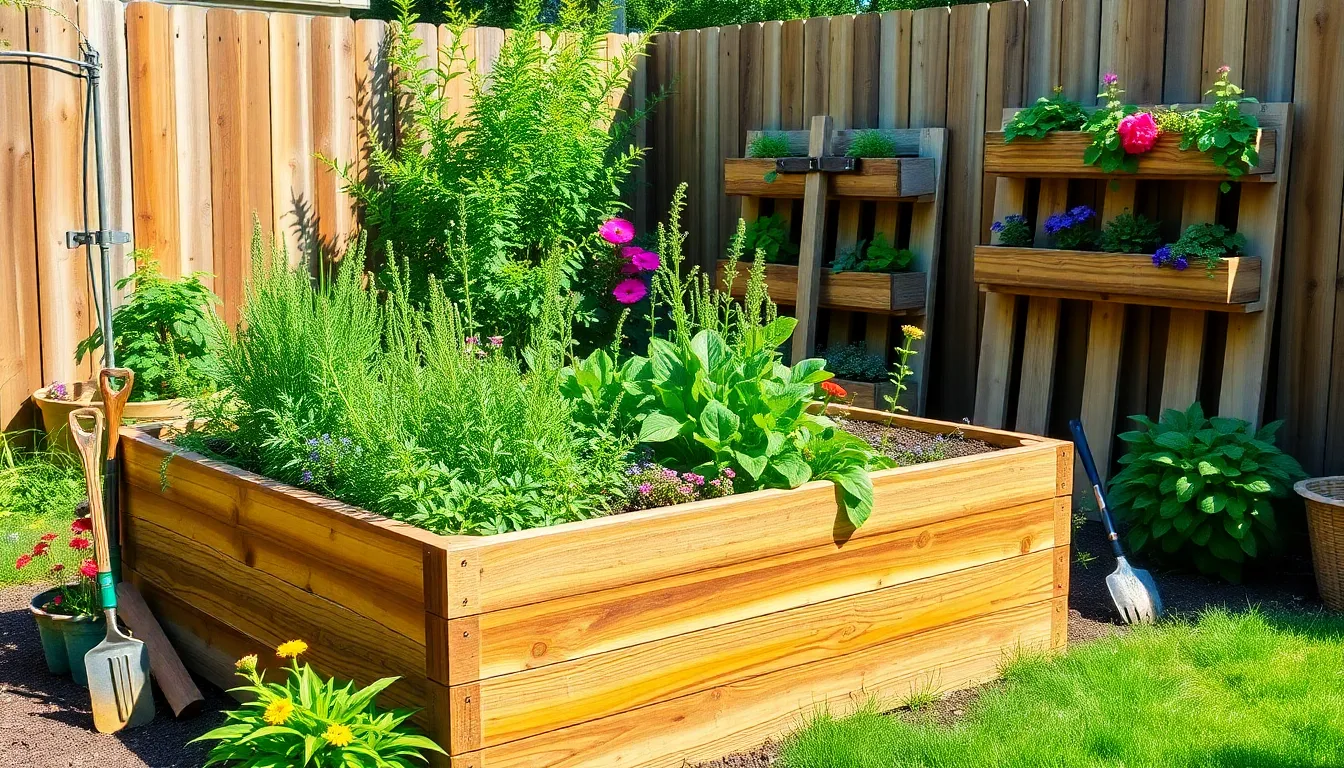
Building custom raised garden beds transforms our gardening experience by providing better soil drainage and easier plant maintenance. We’ll explore three durable construction methods that maximize growing potential while fitting various budgets and spaces.
Construct Cedar Wood Planters for Durability
Cedar wood stands as our top choice for building long-lasting raised garden beds due to its natural resistance to rot and insects. We recommend using cedar boards, weather-resistant wood glue, and galvanized screws for optimal construction results.
Starting with proper measurements ensures our planters fit perfectly in designated garden spaces. Cut cedar boards to desired dimensions based on available area and plant requirements. Weather-resistant wood glue creates stronger joints between board connections while galvanized screws provide structural integrity.
Assembly becomes straightforward when we pre-drill holes to prevent wood splitting during construction. Apply weather-resistant glue to board edges before securing with screws for maximum durability. Finishing with a protective sealant extends the lifespan of our cedar planters even further.
Repurpose Pallets Into Vertical Garden Boxes
Wooden pallets offer an eco-friendly solution for creating space-saving vertical garden structures at minimal cost. We can transform discarded pallets into functional growing systems using basic tools and materials.
Disassembling pallets carefully preserves usable wood pieces for our vertical garden construction. Reassemble boards into vertical structures that maximize growing space in small areas. Wire mesh backing provides additional support for soil retention and plant stability.
Adding a solid back panel prevents soil spillage while creating a professional appearance. Secure wire mesh between slats to hold soil and prevent plant roots from falling through gaps. Mount completed vertical boxes against fences or walls for efficient space utilization.
Create Tiered Beds Using Cinder Blocks
Cinder blocks provide an affordable and durable foundation for multi-level garden beds that create visual interest. We can build tiered structures without mortar using the natural weight and interlocking design of standard blocks.
Laying the first tier requires level ground preparation to ensure structural stability throughout the growing season. Stack additional tiers by offsetting blocks in a brick-like pattern for maximum strength. Each tier accommodates different plant types based on height and sunlight requirements.
Filling completed tiers with quality soil creates optimal growing conditions for various vegetables and flowers. Plant shallow-rooted crops in upper tiers while reserving lower levels for deeper-rooted vegetables. This tiered approach maximizes our growing space while creating an attractive garden focal point.
Design Eye-Catching Garden Trellises and Support Systems
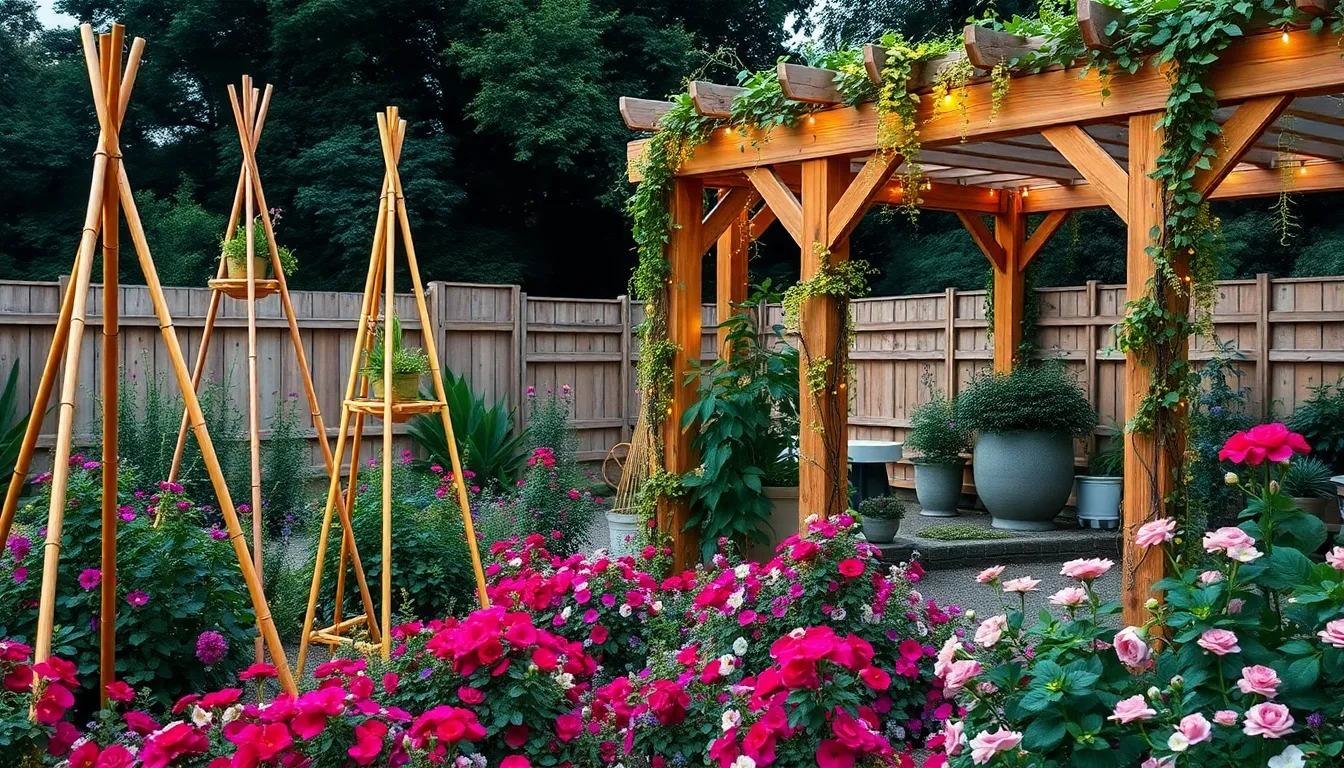
Vertical support structures transform our gardens into three-dimensional masterpieces while maximizing growing space. We can create stunning focal points that serve both functional and aesthetic purposes.
Build Bamboo Teepees for Climbing Plants
Bamboo poles offer an affordable and natural solution for supporting climbing vegetables and flowers. We arrange 6-8 bamboo poles in a circular pattern, spacing them evenly around a 3-4 foot diameter base. Securing the tops together with strong twine or wire creates a stable teepee structure that can withstand wind and weather.
Morning glories, sweet peas, and pole beans thrive on these rustic supports. We position the teepee in full sun locations where climbing plants receive 6-8 hours of direct sunlight daily. The natural bamboo material blends seamlessly with garden landscapes while providing years of reliable support.
Create Wire and Wood Obelisks for Vertical Interest
Wooden frames combined with wire mesh create sophisticated support systems for flowering vines. We construct a pyramid shape using cedar or pine boards, then attach welded wire mesh or chicken wire to form climbing surfaces. These obelisks work exceptionally well for roses, clematis, and climbing hydrangeas.
Copper piping adds an elegant alternative to traditional wood construction. We bend copper tubes into geometric patterns and secure them with specialized fittings. The copper develops a beautiful patina over time, adding character to our garden design.
Panel trellises offer moveable container options for vegetables like cucumbers and beans. We build lightweight frames using 1×2 lumber and stretch wire mesh between the posts. This portability allows us to relocate trellises to greenhouses during harsh weather or reorganize garden layouts seasonally.
Install String Light Pergolas for Ambiance
Wooden pergola structures provide overhead support for both plants and atmospheric lighting. We install 4×4 treated posts at 8-foot intervals, connecting them with 2×8 crossbeams for stability. String lights draped between the beams create magical evening ambiance while grapevines or climbing roses add natural beauty.
The combination of functional plant support and decorative lighting extends our garden enjoyment into evening hours. We choose LED string lights for energy efficiency and weather resistance. This dual-purpose structure serves as an outdoor room while supporting vertical plant growth.
Establish Water Features Using Simple DIY Techniques
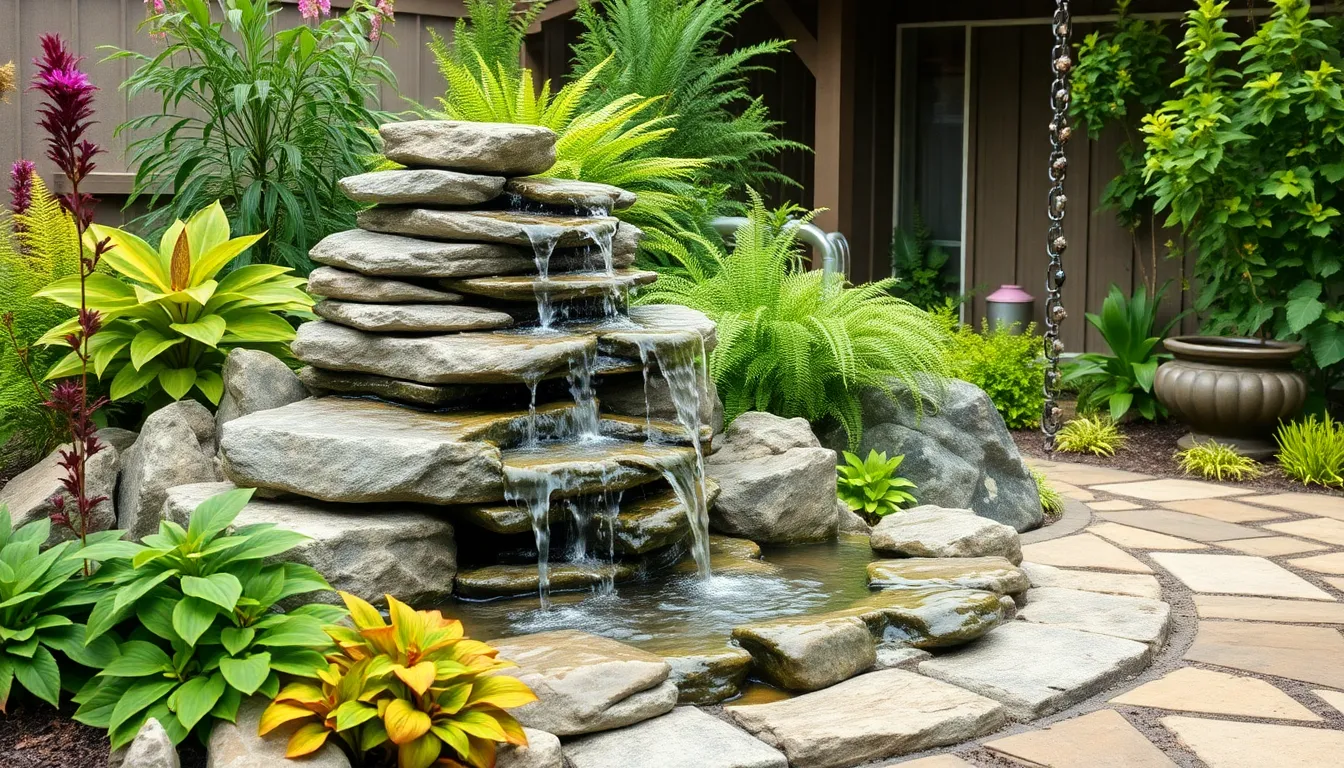
Water features add tranquil sounds and visual appeal to any garden space. We can create stunning aquatic displays using simple materials and techniques that won’t break the budget.
Build a Container Water Garden With Pumps
Container water gardens transform unused tubs or barrels into beautiful aquatic focal points. We start by selecting a watertight container like a whiskey barrel or galvanized tub that fits our space and style preferences.
Submersible pumps provide the necessary water circulation to keep our container garden healthy and functioning. Installing these pumps is straightforward and requires only basic electrical connections to create continuous water movement.
Adding aquatic plants around the pump creates a natural network within our container. Water lilies, lotus plants, and floating hyacinths work well in these setups and provide color throughout the growing season.
Maintenance becomes simple with proper filtration and pump systems in place. We can easily access all components for cleaning and seasonal adjustments without complex installations.
Create Rock and Stone Fountain Displays
Rock fountains offer dramatic visual impact using natural materials we can source locally or purchase affordably. Stacking rocks with different textures and sizes creates interesting water flow patterns as the pump circulates water to the top.
Submersible pumps hide within the rock arrangements and push water upward through drilled holes or natural crevices. We position these pumps at the base and run tubing through the rock stack to create the fountain effect.
Surrounding plants enhance our rock fountain displays with complementary colors and textures. Hostas, ferns, and ornamental grasses work particularly well around stone features and thrive in the moist environment.
Staircase waterfall designs provide modern alternatives to traditional rock fountains. We arrange flat stones in stepped formations that create cascading water effects as gravity pulls the flow downward.
Install Rain Chain Systems for Drainage
Rain chains replace traditional downspouts with decorative alternatives that manage water runoff beautifully. These systems guide rainwater from gutters to the ground while creating pleasant sounds during rainfall.
Installation requires removing existing downspouts and attaching chain systems directly to gutter outlets. We can choose from copper chains, decorative cups, or custom designs that match our home’s architectural style.
Collecting basins at ground level capture the water flow and prevent erosion around our foundation. Large decorative pots or purpose built basins work well and can incorporate plantings for additional visual appeal.
Sound effects from rain chains create peaceful ambiance during storms and light rainfall. The gentle tinkling replaces harsh rushing sounds from traditional downspouts and adds character to our outdoor spaces.
Craft Unique Planters From Household Items
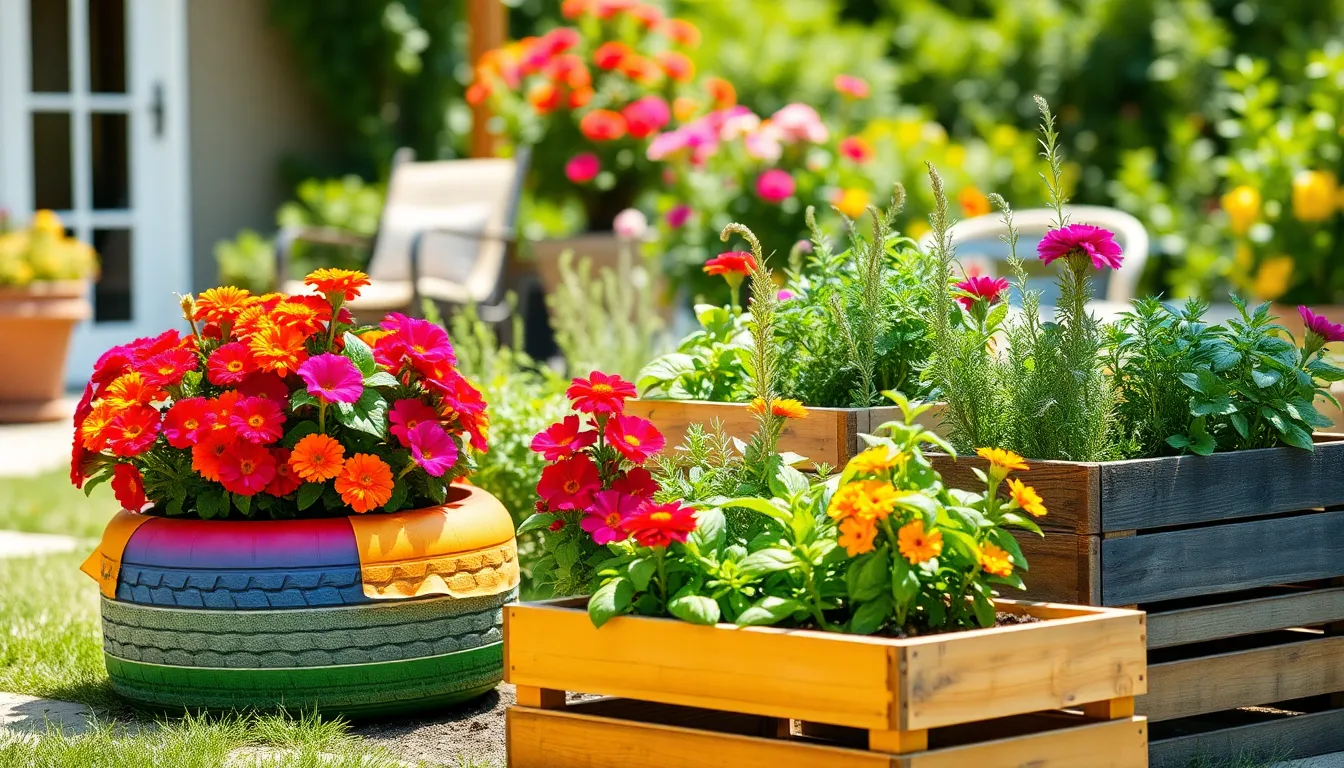
We’ll discover how everyday items around your home can become stunning garden containers. These creative answers cost far less than store-bought planters while adding personality to your outdoor space.
Transform Old Tires Into Colorful Garden Containers
Clean and Paint: We recommend starting with thorough tire cleaning using soap and water to remove dirt and grease. After drying completely, apply primer followed by outdoor acrylic paint in vibrant colors like turquoise, coral, or sunny yellow to match your garden theme.
Add Soil and Plants: Fill painted tires with quality potting soil and create stunning displays with flowers like petunias and marigolds. Small vegetables such as tomatoes and cucumbers thrive in these containers since the rubber retains heat and provides excellent drainage when you drill holes in the bottom.
Upcycle Wooden Crates for Herb Gardens
Disassemble and Clean: Begin by carefully taking apart wooden crates to inspect each board for damage or rot. Sand rough surfaces smooth and treat the wood with food-safe sealant if you’re growing edible herbs.
Reassemble and Plant: Reconstruct crates into rectangular planter boxes and line them with industry fabric for proper drainage. Fill containers with herb-exact potting mix and plant aromatic varieties like basil, rosemary, thyme, and oregano for a kitchen garden that’s both functional and fragrant.
Convert Boots and Shoes Into Whimsical Planters
Clean and Prepare: Start by washing old rain boots, work boots, or sturdy sneakers inside and out with mild detergent. Add a layer of small pebbles or gravel in the bottom for drainage since most footwear lacks proper holes.
Add Soil and Plants: Pack boots with potting soil and choose plants that complement the container size like small succulents, trailing ivy, or compact herbs such as mint and parsley. These quirky planters work especially well hanging from fence posts or arranged on garden steps for visual interest.
Install Garden Lighting for Evening Appeal
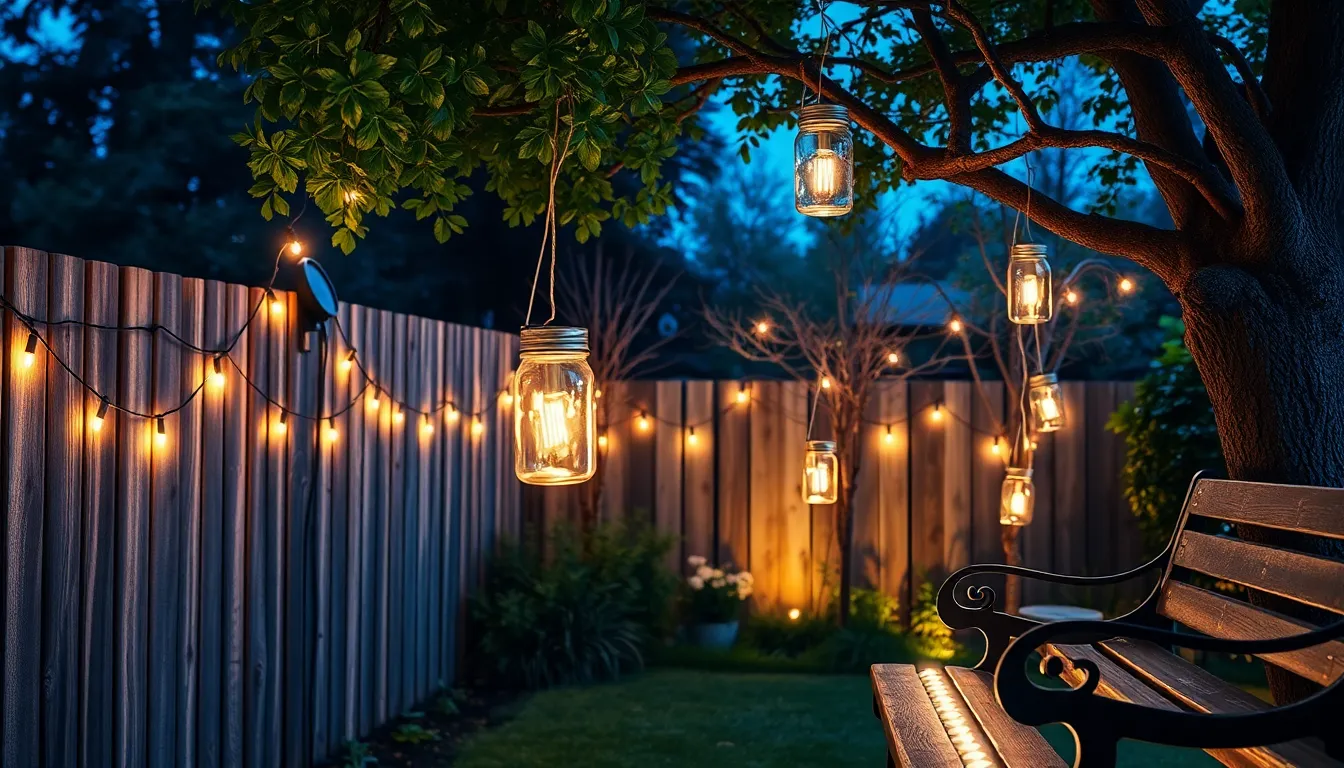
We’ll transform our outdoor spaces into enchanting evening retreats with strategic garden lighting. These illumination projects create warm ambiance while extending our garden enjoyment well into the night.
String Solar Lights Along Fence Lines
String solar lights along fence lines to create instant warmth and visual appeal throughout our garden perimeter. We can easily install these energy efficient lights without complicated wiring or electrical work, making them perfect for weekend DIY projects.
Solar powered string lights provide up to eight hours of continuous illumination after a full day of charging. We’ll position them at varying heights along fence posts to create visual depth and interesting shadow patterns across our outdoor space.
Installation requires minimal tools and takes less than an hour for most standard fence lines. We simply secure the lights using small hooks or zip ties, ensuring the solar panels face south for maximum sun exposure during daylight hours.
Create Mason Jar Lanterns for Pathways
Mason jar lanterns offer rustic charm while providing practical pathway illumination for our garden walkways. We’ll gather standard mason jars, fairy lights or LED candles, and sturdy wire or twine for hanging these decorative fixtures.
Creating these lanterns involves filling each jar with battery powered fairy lights or flameless LED candles for safe outdoor use. We can customize the appearance by wrapping twine around the jar rims or adding decorative elements like colored stones or sand at the bottom.
Placement options include hanging them from tree branches at varying heights or positioning them directly along pathway edges. We’ll space them approximately 6 to 8 feet apart to ensure adequate lighting coverage while maintaining the romantic ambiance they provide.
Build LED Strip Lighting Under Garden Benches
LED strip lighting under garden benches creates modern sophistication while providing subtle ground level illumination. We’ll install waterproof LED strips using adhesive backing, ensuring they can withstand outdoor weather conditions year round.
These strips attach directly to the underside of bench seats using strong adhesive strips designed for outdoor applications. We’ll connect them to solar power banks or low voltage transformers to minimize electricity costs while maintaining consistent lighting performance.
The installation process takes approximately 30 minutes per bench and requires basic tools like wire strippers and electrical tape. We can choose from various color temperatures, with warm white creating the most inviting atmosphere for evening garden relaxation.
Construct Functional Garden Storage Solutions
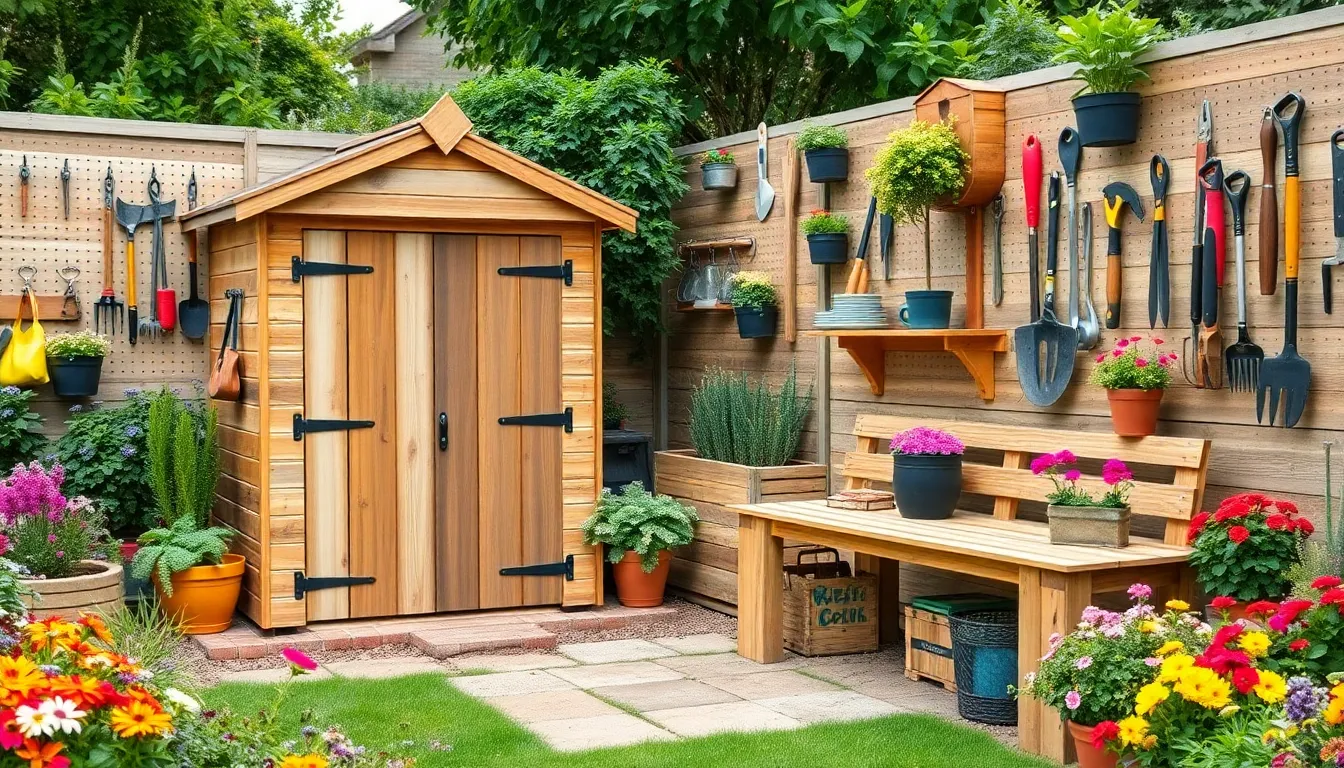
Now we’ll explore practical ways to organize our garden tools and supplies while maintaining the aesthetic appeal of our outdoor spaces. These storage answers combine functionality with style, ensuring our gardening essentials remain easily accessible yet neatly tucked away.
Build Tool Sheds From Reclaimed Wood
Reclaimed wood offers an environmentally friendly approach to creating durable garden storage structures. We can repurpose old pallets and wooden planks from construction sites or renovation projects to build custom tool sheds that blend seamlessly with our garden’s natural environment.
Start by collecting weathered fence boards, barn wood, or discarded pallets to create the frame and walls. These materials provide character while reducing our project costs significantly compared to purchasing new lumber. We’ll need to sand rough surfaces and treat the wood with outdoor sealant to ensure longevity.
Design our shed with wide doors for easy access to larger tools like rakes and shovels. Add internal shelving using shorter reclaimed pieces to organize smaller items such as hand trowels, pruning shears, and seed packets. Install hooks along the interior walls to hang frequently used tools within arm’s reach.
Create Hidden Storage Benches for Supplies
Weatherproof benches with concealed compartments serve dual purposes in our garden spaces. We can store cushions, toys, or gardening supplies inside while providing comfortable seating for garden visitors and ourselves during breaks from yard work.
Transform wooden pallets into functional patio benches by reinforcing the structure with additional support beams. Add a hinged top using weather resistant materials like cedar or treated pine, creating storage space underneath for items we need to keep dry and organized.
Line the interior with waterproof fabric or plastic sheeting to protect stored items from moisture. Include drainage holes in the bottom to prevent water accumulation during heavy rains. We can customize the exterior with outdoor paint or stain to match our existing garden furniture and color scheme.
Install Wall-Mounted Organizers for Small Spaces
Wall mounted pegboards maximize vertical storage in tight garden areas where floor space is limited. We can install these organizational systems on shed walls, fence panels, or garage exteriors to keep our tools visible and easily accessible.
Mount pegboards at comfortable heights for frequent tool retrieval, typically between 4 and 6 feet from the ground. Use various hook sizes to accommodate different tool handles and shapes, from narrow hand tools to wider implements like garden spades and hoes.
Magnetic strips provide another space saving solution for metal gardening tools. Attach these strips to metal surfaces or wooden walls to hold trowels, pliers, and other small metal implements securely in place. We can arrange tools by frequency of use, placing daily essentials at eye level for quick access.
Design Decorative Garden Art and Sculptures
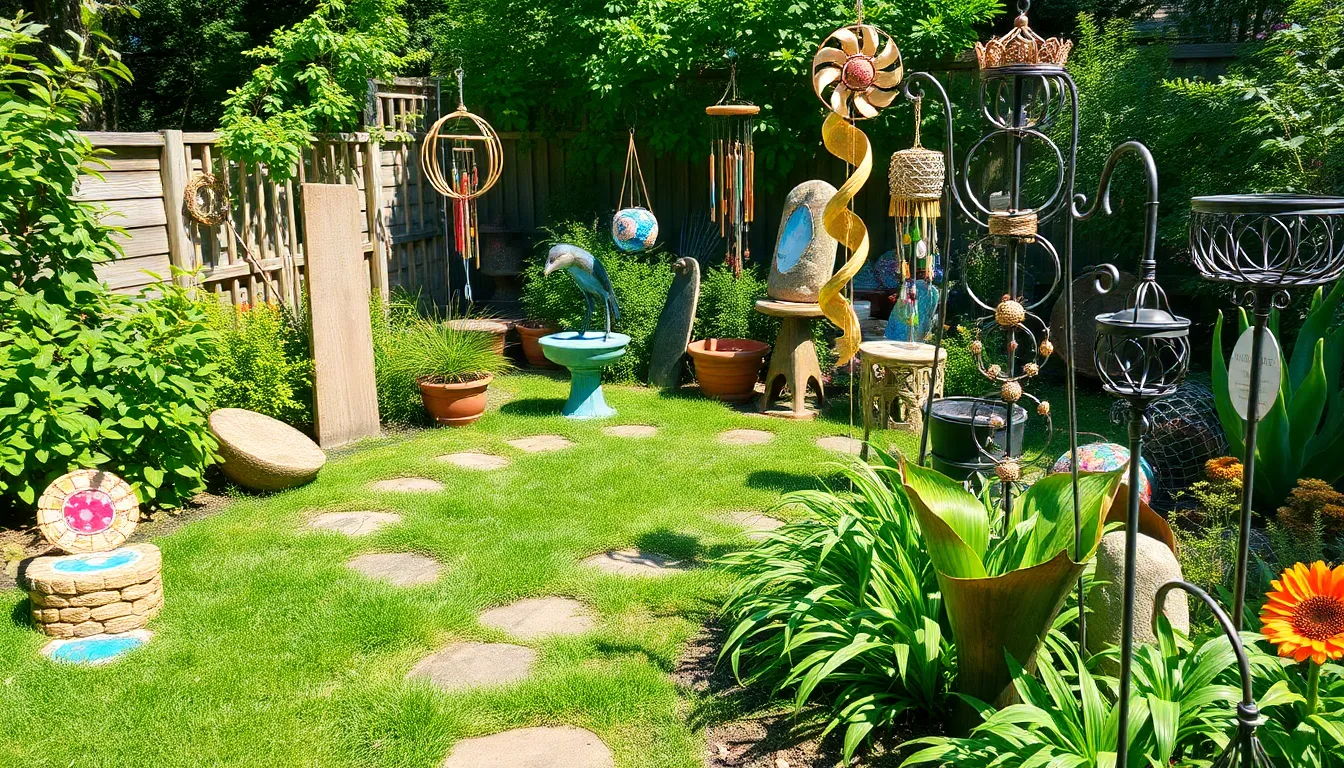
Transforming our outdoor spaces into artistic havens becomes effortless when we incorporate handcrafted sculptures and decorative elements. These personalized touches add character while showcasing our creativity through sustainable materials and natural components.
Create Wind Chimes From Natural Materials
Branches and bamboo sticks create the perfect foundation for our homemade wind chimes that produce gentle melodies in the breeze. We’ll gather materials like sturdy branches, bamboo segments, metal washers, and small bells to construct these natural sound makers.
Drilling precise holes in the top of each piece allows us to connect them seamlessly with twine or thin wire. Starting with the longest pieces at the bottom, we gradually work our way up to shorter segments for optimal sound balance.
Assembly requires patience as we thread each component at different lengths to prevent tangling. Metal washers serve as both decorative elements and sound enhancers, while small bells add delicate chimes that dance with every gentle wind movement.
Build Mosaic Stepping Stones and Garden Accents
Small tiles, colorful pebbles, and recycled glass pieces transform ordinary concrete stepping stones into stunning garden focal points. We’ll sketch our desired patterns on paper first, planning the color distribution and design flow before committing to the permanent installation.
Strong outdoor adhesive bonds our mosaic materials securely to weather resistant surfaces like stepping stones or terracotta garden pots. Working in small sections prevents the adhesive from drying before we complete each design segment.
Design versatility allows us to create everything from simple geometric patterns to elaborate floral motifs using broken ceramic dishes, sea glass, or purchased mosaic tiles. Each finished piece becomes a unique garden accent that reflects our personal artistic vision.
Create Metal Sculpture Gardens Using Recycled Items
Wire hangers, tin cans, and metal scraps from our recycling bins become the raw materials for striking three dimensional garden art. We’ll collect various metal items, cleaning them thoroughly and removing any rust or paint that might interfere with our artistic vision.
Shaping and preparation involves bending wire into flowing curves, cutting cans into decorative strips, and organizing our materials by size and texture. Safety equipment like gloves and eye protection ensures we work confidently with sharp metal edges.
Welding or strong metal adhesives help us assemble our sculptures into cohesive artistic statements that withstand outdoor weather conditions. These recycled metal gardens create dramatic shadows during daylight hours while serving as unique conversation pieces for garden visitors.
Conclusion
We’ve explored countless ways to transform our outdoor spaces through creative DIY garden projects that won’t expensive. From repurposed materials to innovative storage answers these ideas prove that beautiful gardens are within everyone’s reach.
The beauty of DIY gardening lies in its flexibility – we can adapt these projects to fit our unique spaces budgets and personal styles. Whether we’re building raised beds from pallets or crafting wind chimes from natural materials each project adds our personal touch to the industry.
Most importantly these projects connect us more deeply with our outdoor spaces while promoting sustainability through upcycling and creative reuse. Our gardens become not just places of growth but expressions of our creativity and environmental consciousness.
Start with one project that excites you most and watch as your garden transforms into the personalized retreat you’ve always envisioned.
Frequently Asked Questions
What are some budget-friendly DIY gardening projects for beginners?
Start with simple projects like vertical planters using recycled materials, creating pathways with old bricks or pavers, and building basic raised beds from wooden pallets. These projects require minimal tools and experience while maximizing impact. Focus on repurposing household items like old tires for colorful planters or wooden crates for herb gardens to keep costs low.
How can I create garden pathways using recycled materials?
Use old bricks and pavers arranged in various patterns for rustic charm, or transform broken pavers into mosaic-style walkways. Wine bottles can serve as colorful edging borders, while custom concrete stepping stones can be made using household items as molds. These materials reduce waste while enhancing your garden’s aesthetic appeal.
What materials work best for building raised garden beds?
Cedar wood is ideal for durability as it’s naturally rot and insect-resistant. Wooden pallets offer an eco-friendly, space-saving vertical option, while cinder blocks create attractive tiered beds for multi-level gardening. Choose materials based on your budget, space constraints, and desired aesthetic to maximize both function and visual appeal.
How do I build simple garden trellises and support systems?
Create bamboo teepees for climbing plants as an affordable natural option, or construct wire and wood obelisks for flowering vines. Panel trellises work well for movable containers, while string light pergolas provide both plant support and evening ambiance. These structures maximize vertical growing space while adding visual interest.
What are easy DIY water features I can add to my garden?
Transform unused tubs or barrels into container water gardens with submersible pumps. Build rock and stone fountains using natural materials for dramatic visual impact, or install decorative rain chains as alternatives to traditional downspouts. These features enhance tranquility while managing water runoff effectively.
How can I repurpose household items into unique planters?
Clean and paint old tires for colorful planters suitable for petunias and tomatoes. Upcycle wooden crates by disassembling and reassembling them for herb gardens. Convert old boots and shoes into whimsical planters for a fun, quirky garden accent. These projects reduce waste while creating personalized garden containers.
What garden lighting options create the best evening ambiance?
Install solar string lights along fence lines for warmth and visual appeal. Create mason jar lanterns for pathway illumination, or build LED strip lighting under garden benches for modern sophistication. These lighting solutions extend garden enjoyment into evening hours while adding charm and functionality.
How do I create functional garden storage solutions?
Build tool sheds from reclaimed wood like old pallets and weathered fence boards. Create hidden storage benches that provide both seating and storage space. Install wall-mounted organizers to maximize vertical storage in tight areas. These solutions keep tools organized while enhancing your garden’s overall appearance.
What materials work best for DIY garden art and sculptures?
Use natural materials like branches and bamboo for wind chimes, small tiles and recycled glass for mosaic stepping stones, and recycled metal items for sculptures. These sustainable materials showcase creativity while reducing waste. Focus on weather-resistant materials that can withstand outdoor conditions year-round.
How long do DIY garden projects typically take to complete?
Simple projects like tire planters or mason jar lanterns can be completed in 1-2 hours. Medium projects such as raised beds or trellises typically require a weekend. Larger installations like water features or storage sheds may take several weekends. Plan projects based on your available time and skill level.

